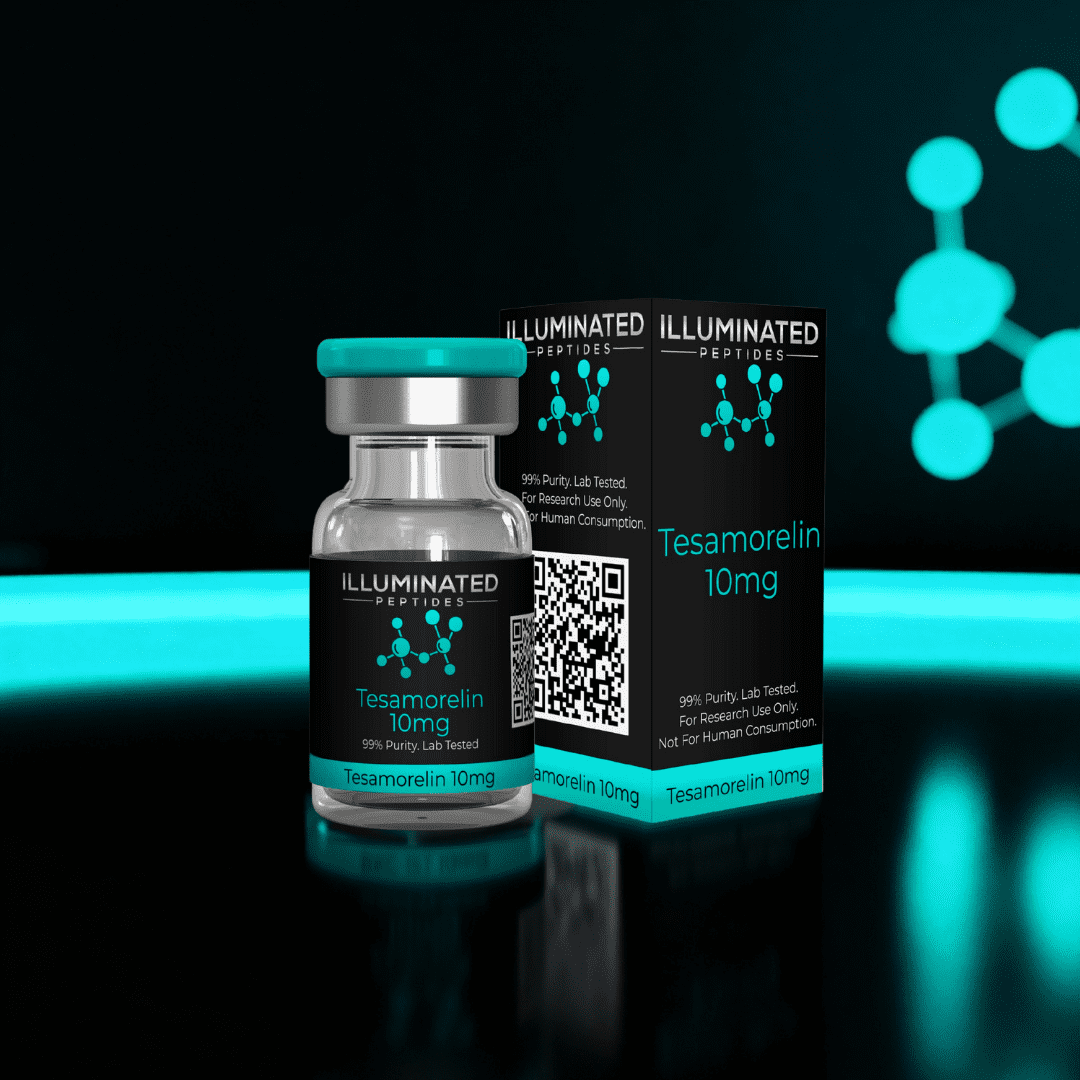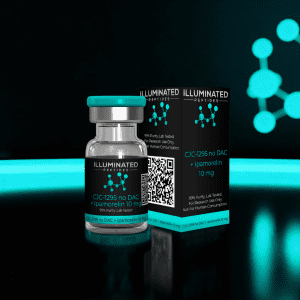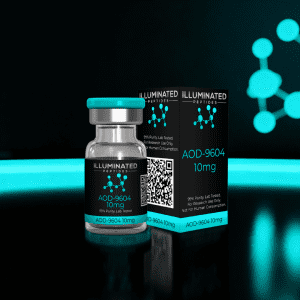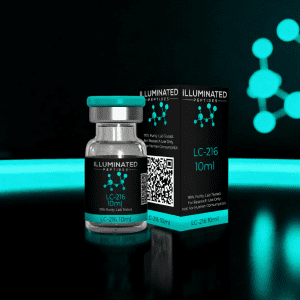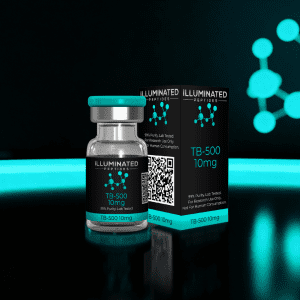Description
What is Tesamorelin?
Tesamorelin, also known by its clinical name Egrifta, is a synthetic peptide originally derived from growth hormone-releasing hormone (GHRH). Unlike many compounds that act indirectly, Tesamorelin works by directly activating receptors in the pituitary gland linked to growth hormone secretion. Specifically, it is an agonist of the growth hormone-releasing hormone receptor (GHRH-R).
Research shows that Tesamorelin can stimulate endogenous growth hormone release, and it has been investigated in clinical trials for conditions such as HIV-associated lipodystrophy and growth hormone deficiency. Beyond its metabolic and body composition effects, some studies also suggest potential benefits in regulating lipid metabolism and improving cardiovascular markers, making it a peptide of broader scientific interest.
Tesamorelin Structure
Sequence: Pyr-His-D-2-Nal-Ala-Trp-D-Phe-Lys-Val-NH2
Molecular Formula: C216H366N66O65
Molecular Weight: 4112.06 g/mol
PubChem CID: 16142117
CAS Number: 218949-48-5
Tesamorelin Research
Tesamorelin and Growth Hormone Stimulation
Tesamorelin is primarily recognized for its ability to stimulate endogenous growth hormone secretion. Unlike direct growth hormone therapy, which supplies exogenous hormone, Tesamorelin acts by binding to growth hormone-releasing hormone receptors (GHRH-R) in the pituitary gland, triggering a physiological release of growth hormone. This mechanism preserves natural circadian patterns of hormone secretion, offering a more regulated and potentially safer approach to GH replacement.
Clinical studies have demonstrated that Tesamorelin effectively increases circulating growth hormone and insulin-like growth factor 1 (IGF-1) levels in patients with growth hormone deficiency or HIV-associated lipodystrophy. The increase in GH/IGF-1 translates into measurable benefits in body composition, including reductions in visceral adipose tissue and improvements in lean body mass.
Tesamorelin and Body Composition
Research has shown that Tesamorelin significantly affects fat metabolism, particularly targeting visceral fat deposits. Multiple clinical trials involving HIV-positive individuals with abdominal fat accumulation revealed that daily Tesamorelin administration led to substantial reductions in visceral adipose tissue without affecting subcutaneous fat. This selective effect highlights its potential utility in metabolic health management.
Beyond fat reduction, Tesamorelin has been studied for its ability to improve lean body mass and muscle function. Patients receiving Tesamorelin showed enhancements in muscle-to-fat ratios, which may contribute to better overall metabolic health and physical performance.
Long-term studies also suggest that Tesamorelin may help prevent fat accumulation in at-risk populations and reduce associated comorbidities such as insulin resistance and cardiovascular risk factors. These findings indicate that the peptide’s benefits extend beyond simple fat reduction to broader metabolic regulation.
Tesamorelin and Insulin Sensitivity
Tesamorelin’s effects on insulin sensitivity have been closely examined in metabolic studies. While increasing GH levels can theoretically impair glucose tolerance, research indicates that Tesamorelin maintains or minimally affects insulin sensitivity in most patients. This balance makes it a promising candidate for metabolic interventions where GH modulation is desired without significant disruption of glucose homeostasis.
Tesamorelin and Lipid Metabolism
In addition to effects on glucose, Tesamorelin has been shown to improve lipid profiles in clinical studies. Reductions in triglycerides and improvements in HDL cholesterol have been observed in patients receiving the peptide, suggesting a potential cardiometabolic benefit. These outcomes support ongoing investigations into Tesamorelin’s role in managing obesity-related complications and dyslipidemia.
Tesamorelin and Cardiovascular Health
While primarily studied for its effects on body composition, Tesamorelin’s influence on cardiovascular health is also of interest. By reducing visceral adiposity and improving lipid metabolism, the peptide indirectly supports vascular function. Preclinical and clinical studies suggest that these changes may lower cardiovascular risk factors, though further long-term trials are needed to confirm direct cardioprotective effects.

